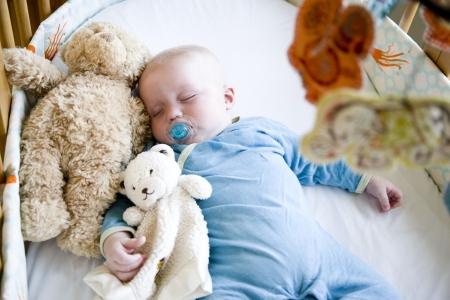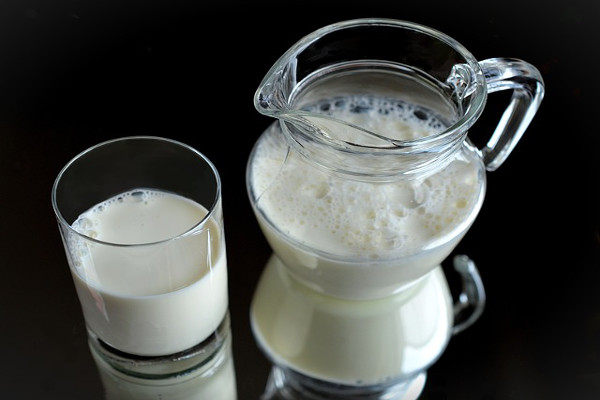The World Health Organisationi and Health Promotion Boardii recommend mothers to breastfeed their babies for the first six months. After six months, appropriate foods can be introduced to a baby while breastfeeding continues for up to two years of age or beyondiii.
But not all mothers can breastfeed for the first six months or continue to do so, due to medical or personal reasons. It can also be challenging for mothers to return to work after their maternity leave.
Common feeding problems in infants
After eight months of breastfeeding, you decide to wean your baby off breastmilk and introduce him to formula. It’s been three days since his first formula feed, and you notice your baby is often fussy and cries after consuming the formula.
Could your baby be having a problem with the milk formula?
Formula intolerance is not unusual among babies. 2 out of 3 formula-fed babies experience common feeding problems such as colic, gas, fussiness, spit-up, constipation and eczemaiv.
What could be the cause?
A possible reason why these feeding problems occur is because of the ingredients used in the milk formula. As babies’ digestive systems are still maturing, they may not be able to properly digest some of these ingredients.
One example is the lactose, or milk sugar, in formulas. Lactose intolerance occurs when the baby has difficulty digesting lactose. When bacteria in the large intestine ferment non-digested lactose, gas is produced in the baby’s tummy, causing the baby to be in discomfort.
While many of the feeding problems tend to resolve with time, when in doubt, always consult your paediatrician to get a proper assessment and discuss alternatives for feeding.
Go gentle on the tummy
One of the most challenging and stressful tasks for new parents is to take care of their little ones, especially when they are unwell or in discomfort. To reduce the chances of the baby experiencing formula intolerance issues, why not start him out on a formula that is gentle on his tummy? Here’s what to look out for:
1. Contains partially hydrolysed protein
Some formulas contain protein that has been partially broken down (hydrolysed). This can help support easy digestion. In addition, a formula with partially hydrolysed protein is also suitable for babies with a family history of allergyv.
2. Low lactose or lactose-free
For babies who are unable to tolerate lactose, providing low lactose or lactose-free formula can help relieve symptoms such as gas and watery stools.
3. Contains prebiotics
Prebiotics promote the growth of good intestinal bacteria in our digestive system. This suppresses the growth of harmful bacteria and helps to maintain a healthy intestinal tract.
4. Has no palm oil
Look for a formula that does not contain palm oil. Studies have found that babies who consumed formula with no palm oil had softer stools and better absorption of calcium, compared to babies who were fed formula that contained palm oil.vi vii
The journey to comfort
A happy baby is one who is feeling comfortable and contented. To know if a formula suits your baby, read his cues. Besides providing relief, the choice of formula should also adequately support the nutritional needs of a rapidly growing child, especially that of the brain, eye and immune system.
Trust your parental instincts. Always seek advice from your doctor if you have any doubt about the feeding intolerance issue that your baby may be experiencing.
Get free milk samples from Abbott today! Click here or on the image below to find out how.
This post is brought to you by Abbott Singapore.
References:
i Exclusive breastfeeding for six months best for babies everywhere. 2011. Retrieved from www.who.int/mediacentre/news/statements/2011/breastfeeding_20110115/en
ii An Eating Guide for Breastfeeding Mothers. 2017. Retrieved from www.hpb.gov.sg/article/an-eating-guide-for-breastfeeding-mothers
iii Exclusive breastfeeding. 2017. Retrieved from www.who.int/nutrition/topics/exclusive_breastfeeding/en
iv Abbott global tolerance survey 12/08, n=5000. (Respondents included Singaporeans). Common feeding tolerance symptoms include gassiness, bloatedness, fussiness (crying), spit-up, constipation, colic and eczema.
v Vandenplas Y, et al. When should we use partially hydrolysed formulae for frequent gastro-intestinal symptoms and allergy prevention? Acta Paediatrica 2014; 103 :689-695.
vi John B. Lasekan, et al. Impact of palm olein in infant formulas on stool consistency and frequency: a meta-analysis of randomized clinical trials. Food Nutrition Research 2017; 61(1): 1330104.
vii Koo WW, et al. Palm olein in the fat blend of infant formulas: effect on the intestinal absorption of calcium and fat, and bone mineralization. J Am Coll Nutr. 2006; 25:117-122.
* * * * *
Like what you see here? Get parenting tips and stories straight to your inbox! Join our mailing list here.
Want to be heard 👂 and seen 👀 by over 100,000 parents in Singapore? We can help! Leave your contact here and we’ll be in touch.




























































Leave a Comment: